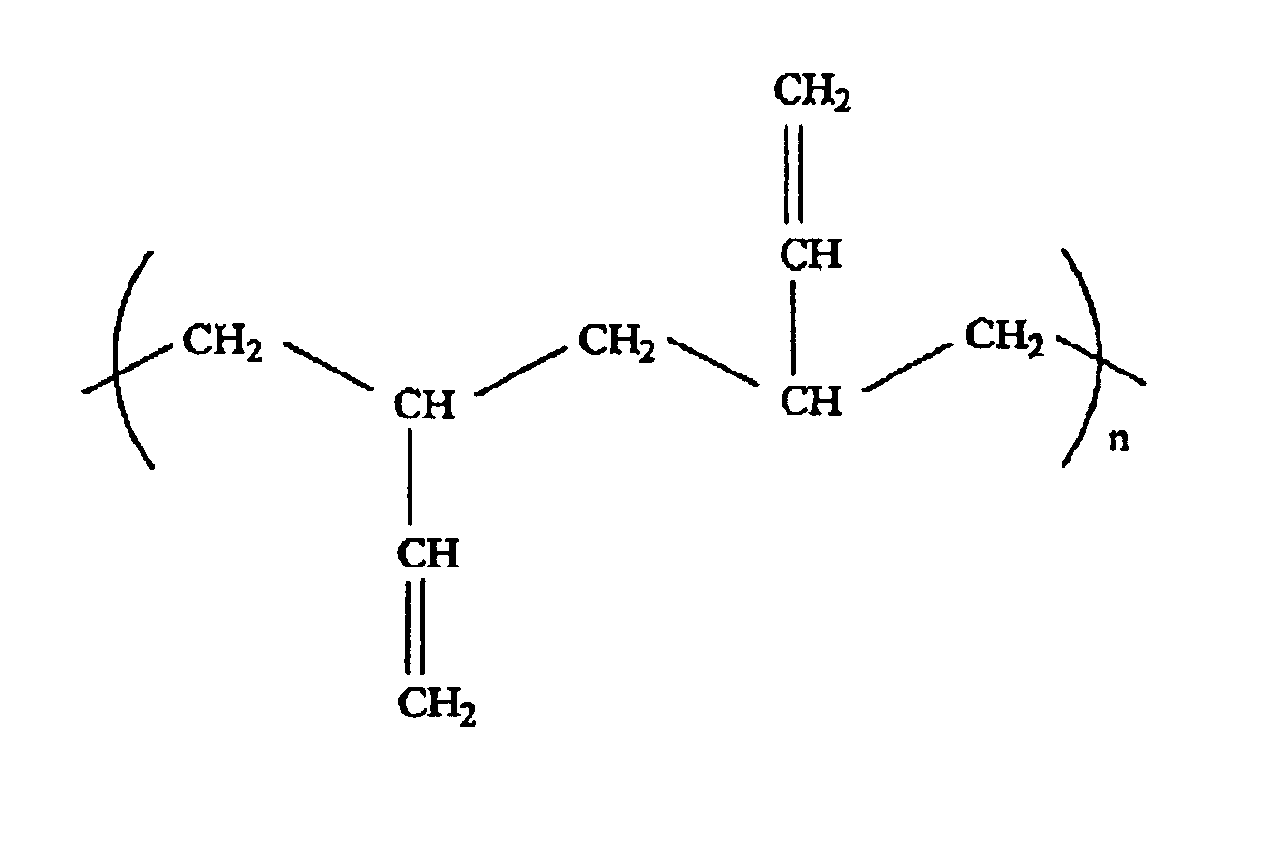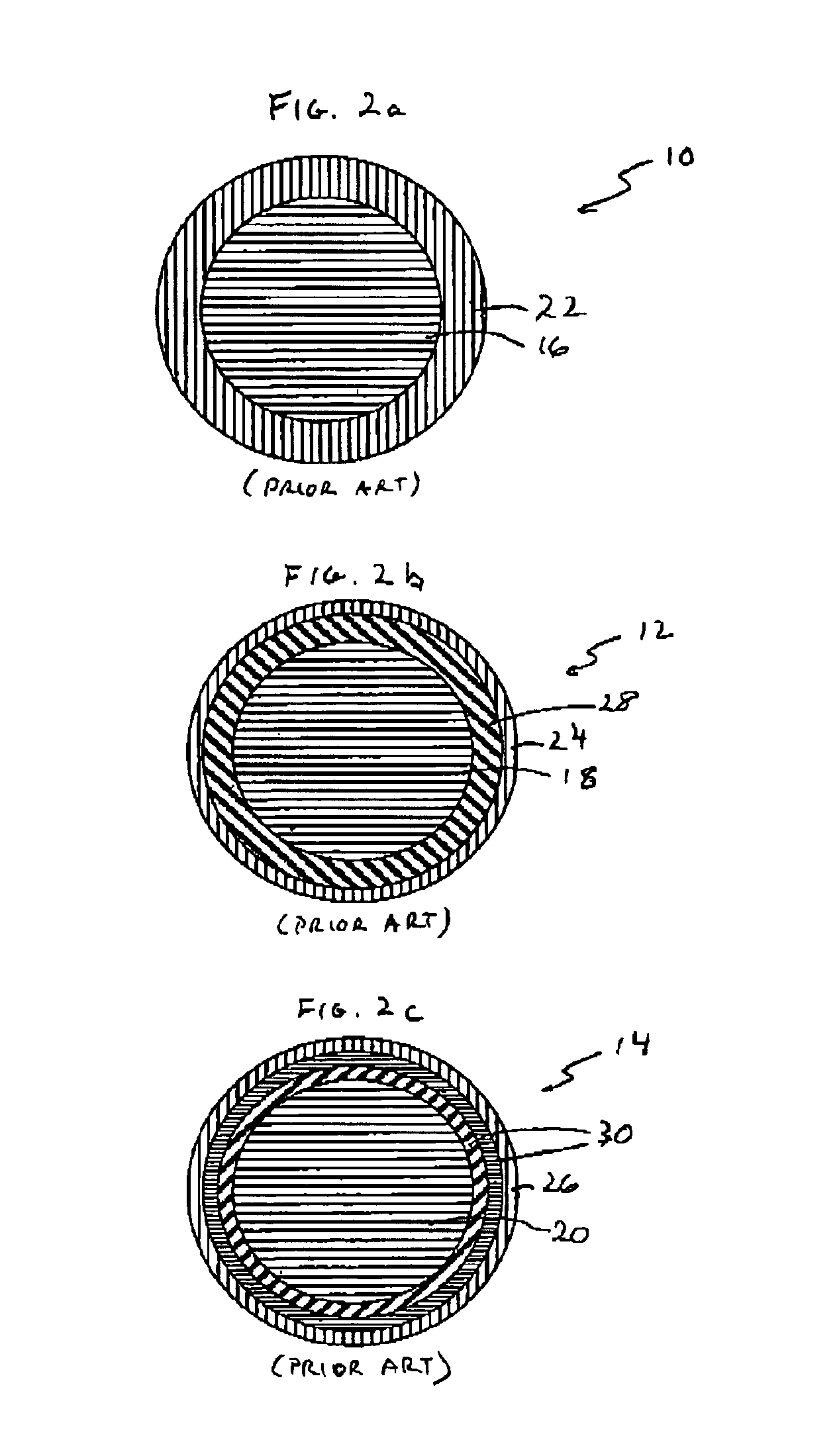Golf balls, golf ball compositions, and methods of manufacture
a technology of golf balls and compositions, applied in the field of golf balls and golf ball compositions, can solve the problems of poor ball control, low spin rate, poor feel
- Summary
- Abstract
- Description
- Claims
- Application Information
AI Technical Summary
Benefits of technology
Problems solved by technology
Method used
Image
Examples
example
Two dozen each of three types of golf balls 10, having covers 22 incorporating compositions within the scope of the present invention were prepared. The balls incorporated cores 16 each having a diameter of 1.58 inches and a PGA compression of 65, and they incorporated covers 0.05 inches thick.
The compositions incorporating SURLYN 6120 ionomer and RB810 syndiotactic 1,2-polybutadiene having crystallinity, in varying percentages. The particular compositions and hardnesses of the covers are shown in Table 2 below.
TABLE 1Cover CompositionsBall 1Ball 2Ball 3RB810 wt. %203040SURLYN 6120 wt %807060Shore D Hardness666258
Each of the finished balls 10 was tested for PGA compression, and also for speed and spin rate when struck by a driver (not shown) and by a 8 iron (not shown) under controlled conditions. The balls also were tested for two shear-cut resistance indices, IS and IB, in comparison to two reference balls. Shear cut resistance was rated from a scale of 1 (excellent) to 5 (poor). ...
PUM
| Property | Measurement | Unit |
|---|---|---|
| Fraction | aaaaa | aaaaa |
| Fraction | aaaaa | aaaaa |
| Fraction | aaaaa | aaaaa |
Abstract
Description
Claims
Application Information
 Login to View More
Login to View More - R&D
- Intellectual Property
- Life Sciences
- Materials
- Tech Scout
- Unparalleled Data Quality
- Higher Quality Content
- 60% Fewer Hallucinations
Browse by: Latest US Patents, China's latest patents, Technical Efficacy Thesaurus, Application Domain, Technology Topic, Popular Technical Reports.
© 2025 PatSnap. All rights reserved.Legal|Privacy policy|Modern Slavery Act Transparency Statement|Sitemap|About US| Contact US: help@patsnap.com



